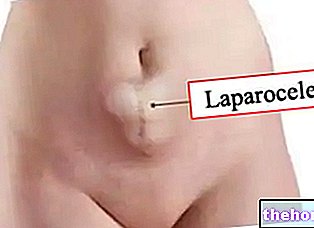What is the Breath Test?
The lactulose breath test is a simple, non-invasive and accurate test, useful for diagnosing the bacterial contamination syndrome of the small intestine, a disorder linked to the overgrowth of bacteria - normally confined in the colon - in the last stretches of the small intestine.
Digestion and Intestinal Gas
Briefly dusting off the physiology of digestion, we recall how the oral cavity, the stomach and the first tract of the intestine (duodenum) are the tracts of the digestive tract most affected by the digestive processes.

When an excessive amount of badly digested nutrients arrives in the colon, the production of intestinal gas becomes massive, and the subject complains of bloating, abdominal distension, belly cramps and flatulence; moreover, these nutrients draw water into the intestinal lumen for osmotic reasons, triggering diarrhea and amplifying gastrointestinal disorders.
Small intestine bacterial contamination syndrome
When the microbial flora normally present in the large intestine proliferates excessively, settling also in the terminal tracts of the small intestine, the absorption of nutrients is compromised, while the amount of intestinal gas increases with amplification of the aforementioned symptoms.
In these conditions, which can be diagnosed through the lactulose breath test, it is necessary to intervene with specific antibiotics to reduce the microbial propulation of the intestine.
How to do it
The test begins by measuring the level of hydrogen in the area exhaled by the patient fasting for about 12 hours. After this first detection the patient is asked to swallow 5-10 grams of lactulose dissolved in 200 ml of water; from this moment on, Hydrogen concentrations in exhaled air are measured at regular intervals of 15-20 minutes for about two to three hours.
Principle of operation
For what has been said, by administering lactulose to patients with an overgrowth of bacteria in the small intestine we will obtain an excessive production of intestinal gas, higher and earlier than in normal subjects. These gases, in particular hydrogen and methane, are measured in the air exhaled by the subject to diagnose this disorder.
Lactulose is a synthetic disaccharide that cannot be absorbed even by the intestine of perfectly healthy people, but can be fermented by the bacterial flora residing in the colon. colon, in the patient suffering from bacterial contamination syndrome of the small intestine the peak will be earlier, because it will appear as soon as the lactulose reaches the terminal tracts of the small intestine. This increase in H2 and CH4 in the exhaled air is followed by a further and more lasting peak due to fermentative catabolism in the colon. Sometimes, the two increases can appear as an early exit plateau.
Glucose Breath Test
As an alternative to Lactulose, xylose, which is also poorly metabolized by the human body, or glucose can be used: in this case we will obtain a hydrogen peak in the exhaled air in case of contamination of the small intestine, while in healthy subjects we will not register no significant increase (because dextrose is completely absorbed).
The glucose breath test is contraindicated in case of diabetes mellitus.
Preparation
In view of the examination, some rules must be followed in order not to influence the result of the breath test, in particular:
- stop taking antibiotics in the 7-15 days preceding the examination;
- 3 days before the examination, suspend lactic ferments, laxatives or antidiarrheals;
- the evening before the exam, do not eat starchy foods (bread, pasta, legumes), fruit, vegetables, dairy products; eat only and exclusively rice, meat, eggs, fish, season only with oil and salt and drink only water (not carbonated);
- do not smoke the day before the exam;
- on the morning of the exam, stay fast.




























